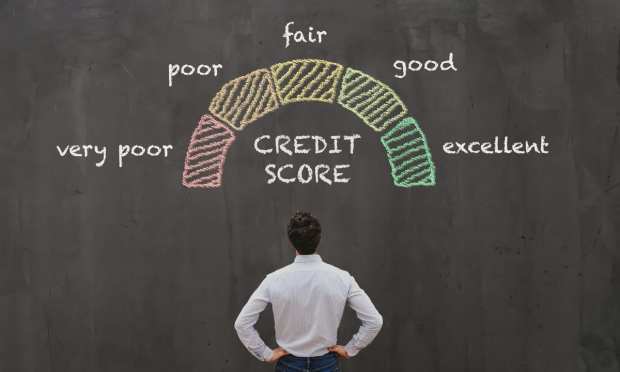NY Fed Research Says Mortgage Forbearance Skews Credit Scores

The pandemic is ebbing, and the U.S. economy is — in lumpy fashion, to be sure — reigniting.
That means forbearance programs are due for an unwinding. Through the pandemic, lenders offered these programs to borrowers to ease the burden of making payments on credit cards, student loans and mortgages in the face of job losses, sickness and economic upheaval.
In an interview with Karen Webster, economists from Liberty Street Economics — the blog of the Federal Reserve Bank of New York — said the mortgage industry might have a hand in skewing credit scores. And now, more than ever, it’s important to take a holistic view of the consumer/borrower.
The interviewees included Andrew F. Haughwout, senior vice president in the Federal Reserve Bank of New York’s Research and Statistics Group; Donghoon Lee, an officer in the bank’s research and statistics group; Joelle Scally a senior data strategist in the bank’s research and statistics group; and Wilbert van der Klaauw, senior vice president in the bank’s research and statistics group.
In a report titled “What Happens During Mortgage Forbearance?” the officers found, through their research, that since March 2020, more than 6.1 million mortgage borrowers entered forbearance. Those forbearance participants were “much more likely” to be delinquent prior to the pandemic than had been seen across the general population of mortgage holders. About 8 percent of borrowers were delinquent before entering the forbearance programs. Roughly a third of the previously delinquent accounts were still in forbearance.
This begs the question as to the impact of credit scores — and whether we need a new credit scoring system.
At a high level, said Scally, the forbearance program has been “very successful, in the sense that it has protected consumers’ credit reports from widespread damage and allowed people to remain current on their loans.”
Risk Signals For Lenders
But herein lies what, on the surface, seems a conundrum. The data show that about 4 percent of mortgage borrowers could go seriously delinquent — lower, of course, than had been seen during the Great Recession, but still troublesome as their status has not impacted credit reports yet. Thus lenders may not be seeing the risk signals attached to those borrowers yet, because forbearance is a credit-neutral event, and might lend money where they shouldn’t.
But as Scally noted, many of the mortgage borrowers, while not having to make payments on their properties, have been able to save up funds (stimulus payments have helped) and in the process, reduce other debts. So, all else being equal, they should be able to shoulder repayments when exiting forbearance.
There’s been a tailwind of rising credit scores due to non-mortgage debt. Lee pointed out that the credit score increases seen amid the pandemic have come, largely, as federal student loan debt (roughly 85 percent to 90 percent of the total amount outstanding) went into forbearance.
But there are enough signals out there that lenders will be able to see risks, post-pandemic, in a clear enough manner.
The friction points lie with the fact that at least some borrowers, pre-pandemic, already had at least one account in collection, and as Lee said, “if you have 10 negative records and the one record disappears — there will be remaining nine negative records.”
The Eventual Exit
As to the eventual exiting of forbearance in the mortgage industry, we’ll see two “tracks” of activity.
At least some of those borrowers are exiting the program by selling their properties, thus eliminating these borrowings entirely. Lee noted that lenders have been working with borrowers in the midst of forbearance to structure exits that make the debt that is still on the books more manageable. In many cases, the payments that were skipped, said Lee, are being “appended” at the end of the mortgage, so in a general illustration, a 15-year term would become a 16-year term.
Don’t expect refinancing to roar back, cautioned van der Klaauw. It’s unlikely that the people who were struggling to make their mortgage payments before the pandemic would suddenly be eligible for refinancing due to their credit scores inching higher as a result of forbearance.
“We haven’t really seen evidence of a surge in applications just because people’s credit scores go up. They might not even be aware that their credit score has gone up a little bit,” said van der Klaauw.
Added Haughwout, at least this time around, the traditional FICO score may not reflect — at least, “not very well” — what happens during a pandemic, as this is not a typical recession.
As he told Webster of those who entered forbearance and the FICO score: “Does that convey much information about their future ability to repay their debt? I’m not sure it does.”
Credit scores, said Lee, are evolving and can be adjusted (with new algorithms) to reflect the times (and as has been widely reported, banks are reducing credit score requirements for some loans). The old 620 is not the new 620, after all.
As for what lies ahead: More data points will help lenders make more informed decisions. Haughwout said research shows that investors in the housing market in the early part of the millennium had high credit scores — as they churned through and paid off scores of mortgages. But they of course got burned in the housing crash (and did not have the incentive to repay because they were not living in the homes with their families).
“It’s important for the lender to look at the whole credit report, not just the credit score,” he told Webster.
